-
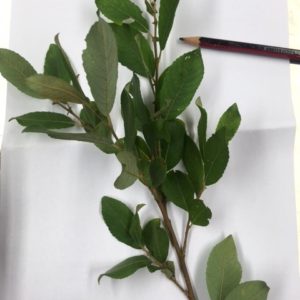
Goat Willow Seed
Salix caprea£6.00 inc. VATGoat or Pussy Willow is more an upright, deciduous shrub than tree. One of the commonest and most tolerant of our native trees. It is quite often a tough pioneer of inhospitable damp sites and thrives on poor soil. Early in spring the male flowers appear – the soft, silky, silver hairy buds which give rise to the name ‘Pussy Willow’. These turn into fluffy balls of pollen. Female flowers, on separate trees, are long green catkins that erupt into white fluff surrounding the seed in May or June. The leaf is very variable.
-
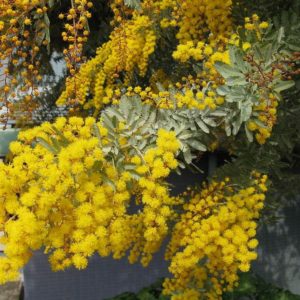
Golden Mimosa Seed
Acacia baileyana£6.00 – £25.00 inc. VATGolden Acacia or Cootamundra Wattle is a small evergreen tree/large shrub with silver grey ferny leaves and short spikes of pompom flowers between Dec and March. Lots of Pollen is produced so the tree is good for early insects. In fact it is planted for honey production commercially as well as for floristry. However, in warmer countries it tends to escape and be a bit of a plague in the wild. In the UK, it definitely needs to be in a conservatory or very sheltered sunny corner. Quite tolerant of drought.
-
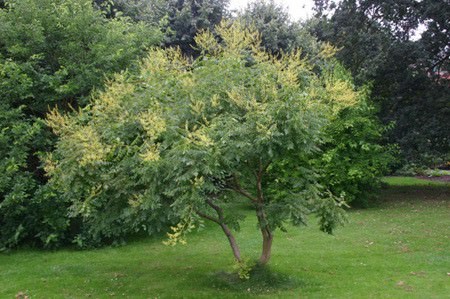
Golden Rain Tree / Pride of India Seed
Koelreuteria paniculata£5.00 inc. VATThe Golden Rain Tree is a broad headed deciduous tree up to 12m high with pinnate leaves made up of 9 to 15 leaflets. In mid to late summer it produces small yellow flowers on large panicles which give rise to the air filled bladder like fruits containing the seed. In autumn these decorative bladders can turn from yellow to pink and then brown and are almost more ornamental then the flowers!
small pic courtesy of Gerd Eichmann / CC BY-SA
-
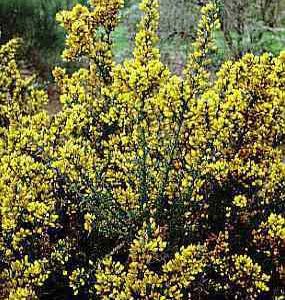
Gorse Seed
Ulex europaeus£5.00 – £10.00 inc. VATGorse is a dense fiercely spiny shrub. In mild areas the yellow, pea-like flowers, smelling of coconut, are produced throughout the year but more usually they flower from March through to May. Brilliant for insects. The shrubs thrive on, and prefer, very poor light or stony soils. They can act as good pioneers, nursing other less tough plants until they’re big enough to survive. No maintenance necessary, but can be pruned quite hard (using armoured gloves!)
-
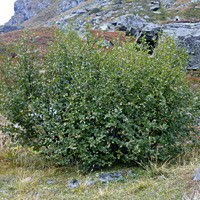
Green Alder
Alnus viridis£8.00 inc. VATThis is a deciduous short lived shrub, but can become a small tree. Unlike other Alder species, long yellow catkins (up to 10cm) are borne in April when the tree is already in leaf. It has a smooth grey bark with shiny green leaves. Sometimes it is used as a nurse crop for timber trees since it doesn’t grow too big and compete. It also fixes nitrogen from the air. Often found growing with Willows it is usually one of the first to colonize scree.
-
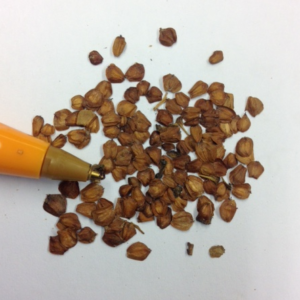
Grey Alder Seed
Alnus incana£5.00 – £12.00 inc. VATGrey Alder is an ideal small tree or bush for cold and wet situations. This very hardy tree has grey undersides to its leaves with yellowish brown catkins which are borne in late winter. The leaves are pointed at the end which makes it easier to distinguish between this and A. glutinosa. It has root nodules, as with other Alders, that fix nitrogen from the air and therefore helps with soil fertility – good for sites that need pioneers.
Not for forestry purposes.
-
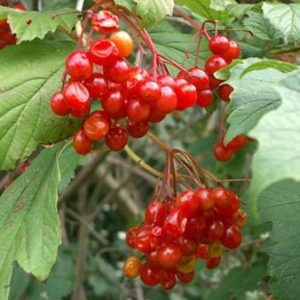
Guelder / Guilder Rose Seed
Viburnum opulus£5.00 inc. VATGuelder Rose is a large vigorous shrub with 5 lobed maple like leaves which colour well in autumn. It produces flattened clusters of white flowers, (a bit like hydrangea flowers), in summer followed by red translucent fruits in the autumn, beloved of winter migrant birds. Can be pruned/trimmed in winter, quite hard. This is one of the prettiest seeds around – they are heart-shaped and various shades of pink!
-
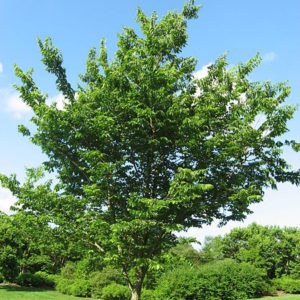
Hackberry Seed
Celtis occidentalis£5.00 inc. VATHackberry is a deciduous tree although it can be evergreen in very warm climates. It has a deeply fissured corky bark. In the UK it rarely produces its black fruits.
-
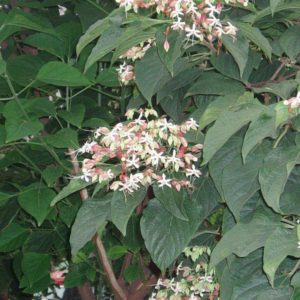
Harlequin Glorybower
Clerodendron trichotomum£5.00 inc. VATA soft leaved, deciduous, medium shrub with exotic white flowers and pink calyces in late summer. These are followed by white, maturing blue fruit sitting in the now cerise calyx. Flowers are heavily scented and leaves have a musty smell when crushed, redolent of peanut butter.
-
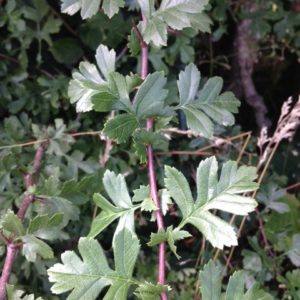
Hawthorn Seed
Crataegus monogyna£5.00 inc. VATHawthorn is a British native hedging plant. It produces a spectacular profusion of flowers in late spring which are visited by all sorts of different insects. There are red-brown fruits (haws) in the autumn. Hawthorn can make a large shrub or a small tree. It is also known as May or Quickthorn and is surrounded by superstition and folklaw. It is associated with May-Day and other spring festivals. Even in Anglo-Saxon times it was used to mark boundaries and it is one of the most common hedgerow trees, being amenable to chopping, laying, flail mowing etc
The 2nd small picture shows unusual hawthorn topiary at Bryan’s Ground Garden in Hereford and 3rd pic is seed being stratified in our fridges, mixed with damp peat.
-
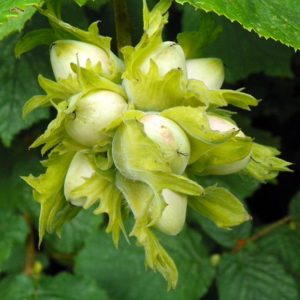
Hazel / European Hazel / Cobnut
Corylus avellana£5.50 inc. VATHazel is a large shrub or small multiple stemmed tree that produces delicate, yellow, long female catkins called lambs tails in late winter. Visited by very early insects It is used in large gardens as a shrub for screening. It produces the edible hazelnut. Every 8-10 years the long stems that have grown can be chopped down to very near ground level and the crown will start to grow again. This is Coppicing(pic is a mature coppice in Ireland)and is great for wildlife, since it provides dappled shade and open spaces. The resultant timber can be used for baskets, chairs, burning, turning and weaving into fences. Commercially selected varieties are grown for nuts in Kent, but also in Turkey for chocolate and chocolate spread manufacture (no names mentioned, ambassador!)
-
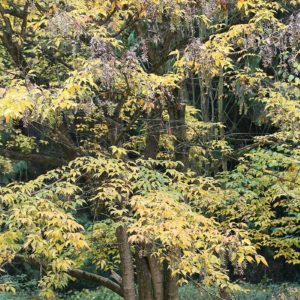
Henry’s Maple Seed
Acer henryi£5.00 inc. VATHenry’s Maple is a rare, small deciduous tree, often multi-stemmed when mature. It grows a wide, flatish crown and striated bark. The trifoliate leaves have fine red stems, hairy veins and good autumn colours of red, yellow and orange. Native of China, it was introduced to UK in 1903, but is still rarely grown. It is an excellent tree for smaller gardens since it casts only light shade and doesn’t grow too tall.
-
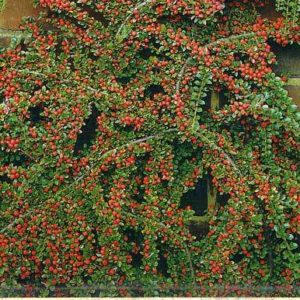
Herringbone Cotoneaster Seed
Cotoneaster horizontalis£5.00 – £10.00 inc. VATHerringbone Cotoneaster is low growing deciduous shrub with branches arranged like fish bones. It can be pruned quite hard without suffering. It bears bright red fruits in autumn together with a richly coloured foliage, and the branch arrangement in winter if grown against a wall is most attractive. The bees really enjoy the pink flowers, but the birds are slow to eat the berries.
-
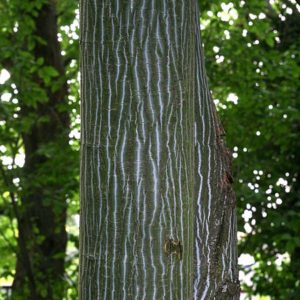
Hers’s Maple Seed
Acer grosser var hersii£7.50 inc. VATAcer davidii subsp. grosseri var hersii
Hers’s Maple is another Snakebark Maple, with olive green bark, striped with white and cream. It grows to be a small, round headed, graceful tree, sometimes multi-stemmed. The deciduous foliage is almost oval with 3 indistinct lobes. Autumn colour is orange and yellow. No pruning is needed. Useful for a smaller garden.
-
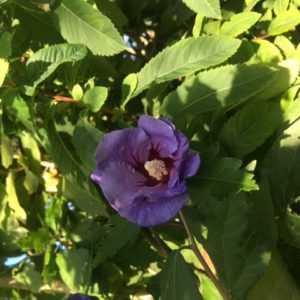
Hibiscus or Tree Hollyhock Seed
Hibiscus syriacus£5.00 inc. VATHibiscus is a late flowering, large or medium sized deciduous shrub. The large blue/purple trumpet shaped flowers are most impressive as they open between midsummer and autumn. Twiggy growth that can become congested, but requires no regular pruning. It is very slow to come into leaf, only just appearing alive by mid May. The seeds look like small sea animals with fine cilia hairs round the edges for swimming!
-
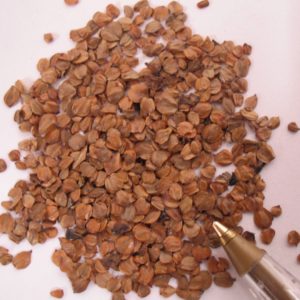
Himalayan Alder Seed
Alnus nitida£5.00 inc. VATHimalayan Alder is a nitrogen fixing tree good for growing in poor wettish soils and is very hardy. It will enrich the soil it is planted in. Unlike other Alders, the decorative male catkins are produced in autumn, not spring. They are very long. New growth tends to be purplish. It is used as a street tree in Pakistan, but not often grown here in UK.
-
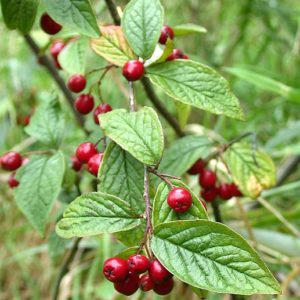
Hollyberry Cotoneaster Seed
Cotoneaster bullatus£6.00 inc. VATHollyberry Cotoneaster is one of the larger cotoneasters. It is deciduous with corrugated leaves that colour richly in the autumn. The white or pink flowers give rise to large red fruits in early autumn which are attractive to birds. It is quite often used in landscaping schemes, roadsides etc and soon spreads, birds taking the berries and spreading the seed. It can be seen a menace but is useful on inhospitable sites.
-

Honey Locust
Gleditsia triacanthos£9.50 inc. VATHoney Locust is an elegant, large deciduous tree with frond like leaves that is also very tolerant of polluted atmospheres. Inconspicuous white/green pea like flowers in summer give rise to impressive long brown twisted seed pods in the autumn, and these have been used as cattle feed, since they are sweet.
-
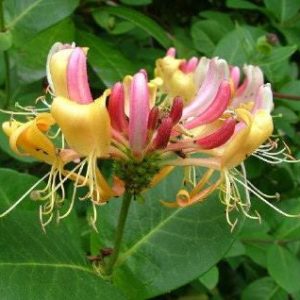
Honeysuckle / Woodbine
Lonicera periclymenum£2.00 – £7.00 inc. VATHoneysuckle is a vigorous medium sized climber. The flowers are up to 5cm long and fragrant, cream inside and purple / yellow on the outside. They flower from early summer through to early autumn and are followed by red berries. Bees love the flowers and birds eat the berries. It is one of the first plants to show leaf in spring, especially in the shelter of woodlands.
-
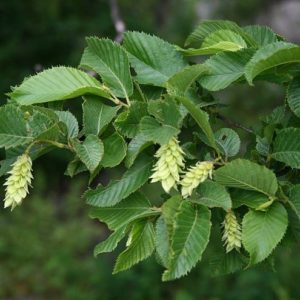
Hop Hornbeam Seed
Ostrya carpinifolia£6.50 inc. VATHop Hornbeam is a medium sized round headed deciduous tree with toothed leaves that turn yellow in autumn. The catkins that appear in spring are impressively long and numerous. The following fruits are up to 5cm long with the nutlets being encased in a bladder-like husk. The hard and dense wood was used to make the wooden soles for wood-working planes, and for producing charcoal. Supposedly the tree is resistant to honey-fungus which is useful!
-
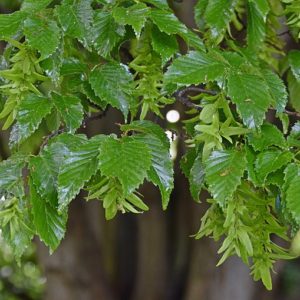
Hornbeam Seed
Carpinus betulus£5.00 inc. VATHornbeam grows to be a medium sized tree with a grey fluted trunk and toothed green leaves that are an outstanding yellow colour in the autumn. The green catkins in spring give rise to the small winged nuts in the autumn. Can be clipped with impunity and so is brilliant as a hedge where Beech is not suitable or would struggle.
Not for forestry purposes
-
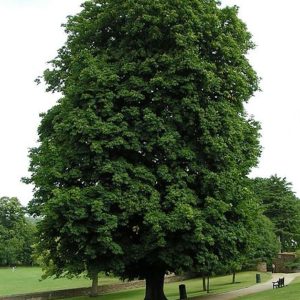
Horse Chestnut Seed
Aesculus hippocastanum£6.00 – £9.00 inc. VATHorse Chestnut is a beautiful, large, deciduous flowering tree. The white flowers with a yellow central blotch form stout pyramids which look highly attractive in their upright position. Insect friendly. The seeds or conkers as they are known are popular with children in Europe for games. They develop in spiky green cases that split open to reveal the beautiful, glossy chestnut brown seed.
-
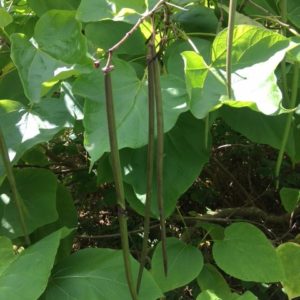
Indian Bean Tree Seed
Catalpa bignonioides£5.00 inc. VATIndian Bean Tree is a medium sized deciduous tree from the eastern USA. Its leaves are up to 20 cm long and it has attractive white flowers with yellow and purple markings, frequented by bees. The fruiting capsules/bean pods are around 30cm long and 4 to 8 mm wide and remain well after the leaves have dropped in autumn. If pollarded every other year, the leaves grow huge, but can then be shattered by heavy rain.
flower pic courtesy of Le. Loup.Gris. Multi-license with GFDL and CC-BY-SA
-
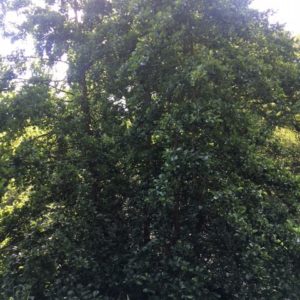
Italian Alder Seed
Alnus cordata£5.00 – £10.00 inc. VATA splendid medium sized, deciduous conical tree, with bright green glistening foliage preceded by yellow catkins that appear in the late winter. Like other Alders, it ‘fixes’ nitrogen from the air, so helping soil fertility. Because of this and the fact that it is tough and hardy, it is often used in the planting and reclamation of old industrial sites. The reddish orange timber is not very durable in air but is long-lasting in water. The blackish cones that hold the seed in autumn are larger than the native Alder cones, and quite decorative.


Sign up to receive great news and offers